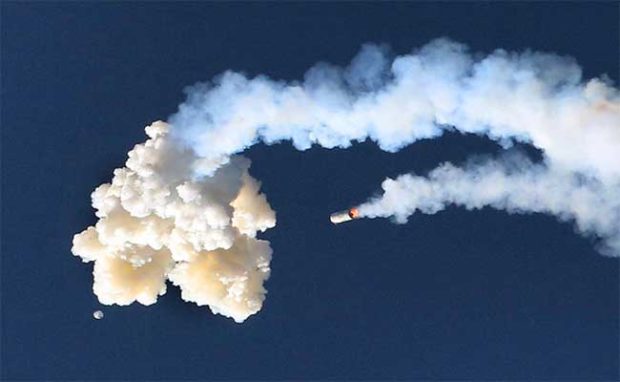NASA’s Newest Test for Upcoming Moon Mission
NASA proceeded with a full-stress launch abort test. The test was for the Orion capsules designed to carry astronauts to the moon. The capsule was empty for the morning demo, which officials said appeared to be successful.
Test complete! Today’s ~3 minute test of @NASA_Orion spacecraft's launch abort system verified that @NASA_Astronauts can safely get away from their launch vehicle in the case of an emergency after liftoff. More: https://t.co/mUf6z9uYjA pic.twitter.com/nI9CZKT6H9
— NASA (@NASA) July 2, 2019
Barely a minute after liftoff from Cape Canaveral Air Force Station, the abort motor fired, pulling the capsule from the booster about 6 miles (10 kilometers) up. The capsule continued upward another 2 miles (3 kilometers), then flipped to jettison the abort tower.
NASA chose not to use parachutes to keep this test version of the capsule simple and thus save time, and so it crashed into the Atlantic at 300 mph (480 kph) as planned, the three-minute test complete. Twelve data recorders popped off in bright orange canisters before impact, for ocean retrieval.

Photo: AP
“By all accounts, it was magnificent,” said program manager Mark Kirasich. It will take a few months to go through all the data collected by the hundreds of vehicle sensors, he said.
NASA aims to put astronauts back on the moon by 2024 using its still-in-development Space Launch System, or SLS, rocket. Tuesday’s test represents “a really great, great step forward today for the team,” Kirasich said.
Related Articles
NASA Sets Sights on Opening the ISS to Tourists Starting in 2020
SpaceX and NASA Silent After Capsule Crash
This was the second abort test for Orion, conducted at a speed of more than 800 mph (1,300 kph). The first, in New Mexico in 2010, was lower and slower.
A launch abort system on a Russian rocket saved the lives of two astronauts last October. They launched again in December, this time making it to the International Space Station, where they’re still working.
“It had been 35 years since anyone on the planet had had to exercise their launch abort system,” NASA astronaut Randy Bresnik told reporters Monday. “That was definitely a good message to all of us that, ‘Hey, this is serious stuff. This isn’t just an OK, it probably won’t happen.’ We need to be ready.”

